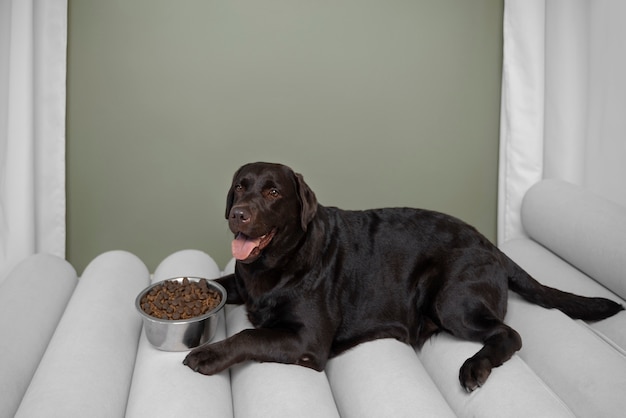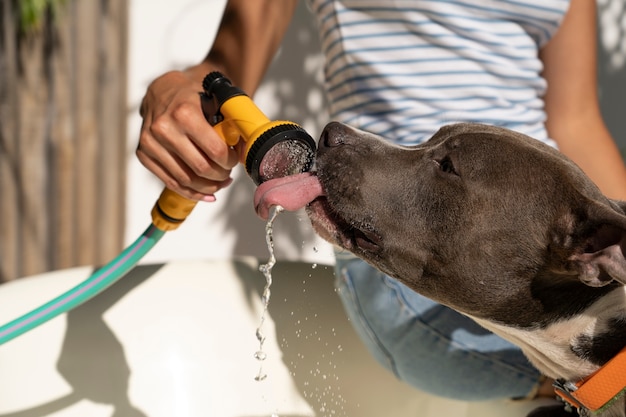Recognizing Signs of Heatstroke in Pets


Recognizing Signs of Heatstroke in Pets: Protecting Your Dog or Cat from Texas Heat
Warm, sunny days in Texas bring plenty of opportunities for pets and their families to get outside and enjoy the beautiful weather. However, with rising temperatures comes a serious risk that every pet owner should be aware of: heatstroke in pets. Understanding the signs of overheating in dogs and cats is essential for keeping your four-legged companions safe during the hottest months. At Clifton Veterinary Clinic, located at 4117 Highway 6, Clifton, TX 76634, our veterinary team is dedicated to providing pet owners in Clifton and surrounding communities with the knowledge and resources to help prevent and address heat emergencies.
In this blog, we will discuss the key symptoms of heatstroke in pets, explore why pets are especially vulnerable in our local climate, and provide guidance on what to do if you suspect your pet is overheating. You will also learn how our veterinary professionals can diagnose and treat heatstroke, and how preventive care plays a crucial role in your pet’s wellbeing. If you have ever searched for a “vet near me” during a hot summer emergency, knowing when and how to act could save your pet’s life. As your trusted partner for comprehensive veterinary services in Clifton, we encourage you to schedule an appointment whenever you have concerns about your pet’s health, especially during the peak of Texas heat.
Recognizing the Warning Signs of Heatstroke in Pets
Catching the early indicators of heatstroke in pets can be the difference between a full recovery and a life-threatening emergency. Dogs and cats often show subtle signs at first, so it’s important to know what to look for during outdoor activities, walks, or even when your pet is resting indoors without adequate ventilation.
Key Symptoms of Heatstroke in Dogs and Cats
The most common signs of overheating in dogs include excessive panting, drooling, and restlessness. As the condition progresses, you may notice your pet struggling to breathe, appearing lethargic, or even collapsing. Other early warning signs are red or pale gums, vomiting, diarrhea, and a rapid heart rate. In cats, symptoms can be more subtle, with open-mouth breathing, weakness, and excessive grooming as possible early indicators. If your pet is disoriented, has glazed eyes, or seems unable to stand, these are clear signals that immediate veterinary attention is needed.
Prompt recognition of these symptoms is especially important for brachycephalic breeds (such as Bulldogs and Pugs), older pets, overweight animals, and those with underlying health issues. Because the risk of heatstroke is higher during the hottest parts of the day, extra vigilance is needed when temperatures soar in Clifton and the surrounding region.
Understanding Why Heatstroke Happens: Risks in the Texas Climate
Heatstroke in pets occurs when their bodies are unable to regulate temperature effectively, causing their core body temperature to rise dangerously high. Unlike humans, pets do not sweat through their skin; instead, dogs primarily cool themselves through panting, while cats rely on limited sweat glands in their paw pads and grooming behavior. When the heat and humidity in Texas climb, these natural cooling methods may not be enough.
Contributing Factors to Heatstroke in Pets
Several factors can increase your pet’s risk of developing heatstroke. High temperatures combined with humidity, direct sunlight, poor ventilation, or being left in a parked car can quickly overwhelm your pet’s ability to cool down. Vigorous exercise during midday or leaving pets outdoors without access to shade and fresh water are common causes seen by our veterinary team. Breeds with short noses, thick coats, or underlying health conditions are particularly vulnerable.
In Clifton and surrounding communities, summer temperatures can climb rapidly, so even a short afternoon walk or a trip to the park may expose your pet to unsafe conditions. Recognizing the environmental risks in our area and adjusting your pet’s routine accordingly is a vital part of keeping them safe.
Treatment and Professional Management for Heatstroke in Pets
If you suspect heatstroke in your dog or cat, immediate action is critical. The first step is to move your pet to a cool, shaded area and begin lowering their body temperature by applying cool (not cold) water to their fur, especially on the belly and paws. Provide small amounts of cool water to drink, but do not force your pet to drink or use ice-cold water, which can cause shock.
How Clifton Veterinary Clinic Diagnoses and Treats Heatstroke
Once you arrive at our clinic, our veterinary professionals will quickly assess your pet’s condition using advanced diagnostics available at our Clifton location. Diagnostic approaches may involve checking your pet’s temperature, blood pressure, and organ function to determine the extent of heat damage. Treatment options for heatstroke in pets at our facility include intravenous fluids to combat dehydration, oxygen therapy, medication to stabilize breathing and heart function, and careful monitoring for complications such as kidney failure, clotting disorders, or neurological issues.
Our comprehensive approach ensures that every pet receives individualized care based on their unique needs, and we work closely with you to explain each step of the treatment plan. In cases of severe overheating, hospitalization may be necessary for ongoing support and monitoring.
For more information on what to expect during urgent situations, our emergency care services page provides additional details about how we help pets facing life-threatening health events.
Preventing Heatstroke: Simple Steps to Keep Pets Safe
Preventing heatstroke in dogs and cats is far easier than treating it. The best strategy is to minimize your pet’s exposure to heat and humidity, especially during the hottest parts of the day. Always ensure your pet has access to fresh water and shade when outdoors, and consider walking dogs early in the morning or later in the evening when temperatures are cooler.
Home Care Tips for Hot Texas Days
Incorporate regular breaks during outdoor play, and monitor your pet for early signs of overheating, such as heavy panting or seeking shade. Never leave pets unattended in vehicles, even with the windows cracked, as temperatures inside can rise to dangerous levels within minutes. For long-haired breeds, regular grooming can help them stay cooler. Indoor pets should have access to fans or air conditioning, and cats in particular may benefit from cool surfaces to lounge on.
If you live in Clifton or nearby areas, consider discussing preventive care strategies with our veterinary team during your pet’s next wellness exam. Our team can recommend tailored advice based on your pet’s breed, age, and health history to minimize the risk of heatstroke in pets in Clifton.
When to Seek Veterinary Care for Heatstroke
Time is of the essence when it comes to heatstroke in pets. If your dog or cat shows any signs of overheating and does not respond to initial cooling measures within a few minutes, or if symptoms progress to vomiting, unresponsiveness, or seizures, contact a veterinarian immediately. Attempting to treat moderate to severe heatstroke at home can lead to dangerous complications or permanent organ damage.
Our veterinary professionals encourage you to call us as soon as possible if you are concerned about your pet’s exposure to heat. Early intervention can make a life-saving difference, especially during periods of extreme weather in Clifton and surrounding communities. For those searching for quality veterinary services near me during a heat emergency, knowing that you have a trusted provider in your area can offer peace of mind.
Protect Your Pet from Texas Heat: Schedule a Wellness Visit Today
Raising awareness about heatstroke in pets is an essential part of responsible pet ownership, especially during the intense Texas summer. By recognizing the warning signs of overheating in dogs and cats, taking preventive measures, and knowing when to seek help, you can protect your furry family members from this life-threatening condition.
At Clifton Veterinary Clinic, our compassionate veterinary professionals are committed to providing comprehensive care for dogs and cats in Clifton and surrounding communities. Whether you need advice on managing your pet’s risk, want to schedule a routine checkup, or require emergency veterinary care, we are here to help every step of the way. If you have been searching for the best veterinarian near me or need guidance on preventing heatstroke, we invite you to reach out to our team.
To schedule an appointment or discuss any concerns about heatstroke in pets in Clifton, call us at (254) 675-8925 or visit us at 4117 Highway 6, Clifton, TX 76634. Your pet’s health and wellbeing are our top priorities, and our veterinary team is dedicated to supporting you through every season.
This blog is intended for informational purposes only and does not replace professional veterinary care. If you suspect your pet is experiencing heatstroke or any other medical emergency, contact a veterinarian immediately.


















